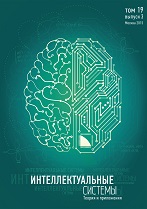|
|
Intelligent systems. Theory and applications, 2021, Volume 25, Issue 4, Pages 36–44
(Mi ista413)
|
 |
|
 |
Part 1. Plenary reports
Brain-artificial intelligence interfaces: foundations and perspectives
A. Ya. Kaplan
Lomonosov Moscow State University
Abstract:
The human brain is obviously a "generic" object for determining, including artificial "intelligent systems". However, the mechanisms of the actual intellectual activity of the brain still remain undiscovered in their most essential part. To a large extent, this is due to the also obvious fact that natural intelligence in a broad sense has the property of a subjective representation of reality, the operational architectonics of which, its formats and completeness of description are unknown to us. In this regard, and taking into account the absence of a "general theory of the brain", it becomes problematic to create neuromorphic artificial intelligence systems based on analogies. The level of such "neuromorphism" will be entirely determined by the boundaries of our understanding of how the human brain works. Meanwhile, the neuromorphic property of artificial intelligence systems can be achieved not so much by building brain-like structural and functional architectonics of these systems (artificial neuron networks, deep learning algorithms, etc. D.), how much through their training of two-way communication with natural intelligence. We believe that the channels of brain-artificial intelligence information interaction for launching the learning processes of "communication" can be built on the basis of technologies of non-invasive brain-computer interfaces (BCI) of a new generation. The key link of these technologies will be feedback loops, within which artificial intelligence modules connected to EEG analysis will demonstrate to a person through natural sensory channels their hypotheses regarding the belonging of specific EEG patterns to certain mental acts of a person. In the interactive process, these hypotheses will be refined to full convergence, thus forming interaction trajectories in the memory of the human and machine brains to an acceptable level of "mutual understanding". The report will discuss in detail the neurophysiological and neurotechnological grounds for creating "brain-artificial intelligence" interfaces.
Keywords:
human brain, electroencephalogram, brain-computer interfaces artificial intelligence, neuromorphic systems.
Citation:
A. Ya. Kaplan, “Brain-artificial intelligence interfaces: foundations and perspectives”, Intelligent systems. Theory and applications, 25:4 (2021), 36–44
Linking options:
https://www.mathnet.ru/eng/ista413 https://www.mathnet.ru/eng/ista/v25/i4/p36
|

| Statistics & downloads: |
| Abstract page: | 122 | | Full-text PDF : | 58 | | References: | 20 |
|




 Contact us:
Contact us: Terms of Use
Terms of Use
 Registration to the website
Registration to the website Logotypes
Logotypes








 Citation in format
Citation in format 